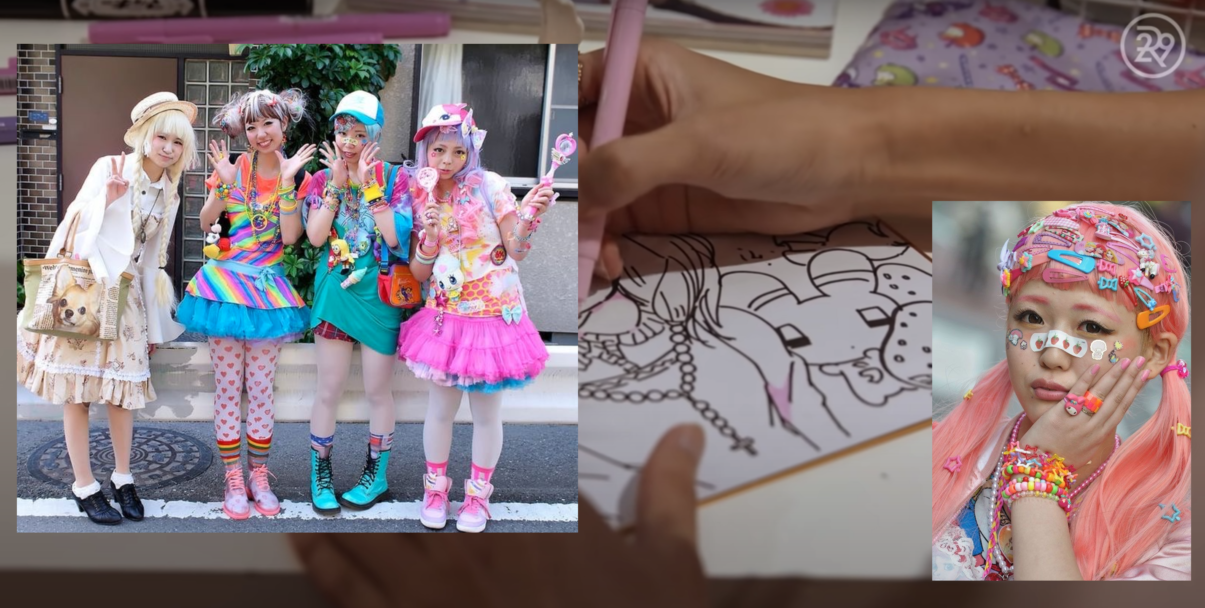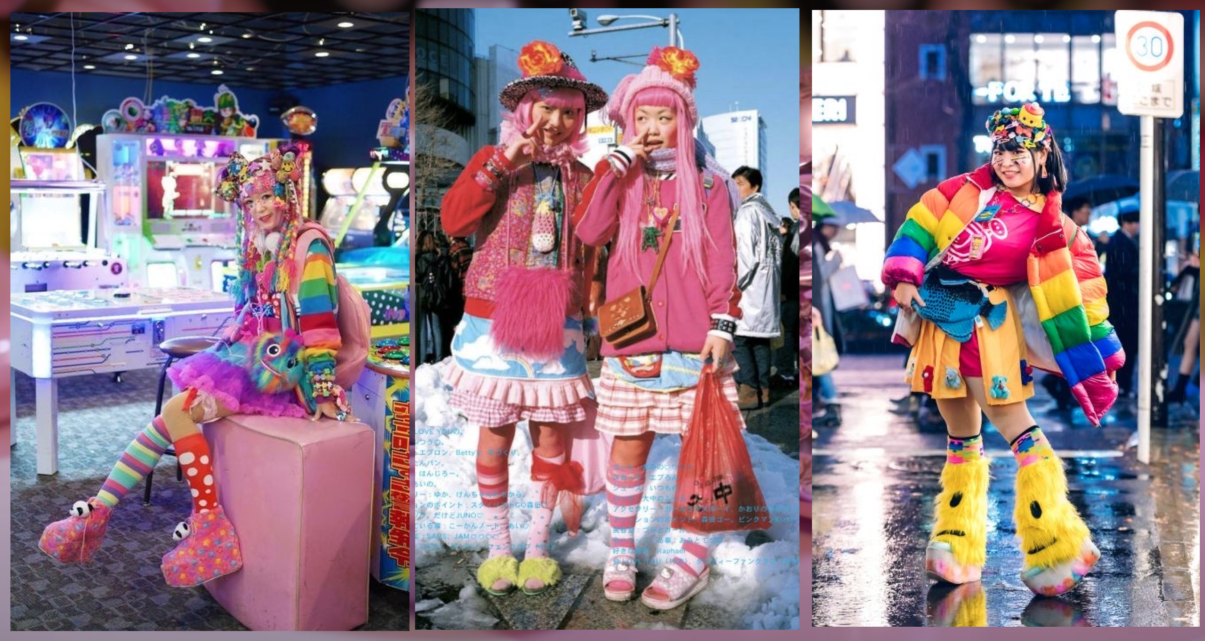I remember watching Refinery 29’s video a couple of years back, titled The Dark Side of Harajuku Style You Haven’t Seen Yet, which opened my eyes to a whole new perspective on what style and fashion could mean. Harajuku and kawaii culture has started in Japan and has taken the world by storm. However, the not-so-known side and dark connotation behind the style are worth taking a look at.
What is Kawaii?
The word “kawaii,” has evolved greatly over time and modern usage translates to “cute”, “lovable” and “adorable.” The original meaning of the word, however, is “kawo-hayu-shi”, which means, “face flushed.”; describing the feelings of “embarrassment, awkwardness, and self-consciousness.”
Over time, the word evolved into the cuteness the aesthetic brings, but is also symbolizing self-consciousness, insecurities, not feeling enough, and being shy as attractive and lovable. This comes with another darker connotation, that leads to the fetishization of women, especially younger girls.
Pedophilia and the sexualization of the younger generation is a popular aspect of Anime and Manga culture as well but is seen most in society through Kawaii girls, and their older fanbases. The issue in Japan became so serious that there was a period of time where news revolved around these famous kawaii girls being murdered by their oftentimes older white male fans after not acting as their characters or replying back to some fans’ sexual requests, which oftentimes ended in assault.
Other than the crime and murder around this style, the pedophilia attached to it oftentimes goes unnoticed. The use of colors and pastels and items like baby clothes, nursery bottles, and pacifiers all represent toddlers being sexualized, most of them being young girls, which is being normalized, just like the lolita culture.

Kawaii and Sexism
Kawaii culture’s roots have a sexist overtone, by creating an innocent, submissive childlike women figure as the ideal monotype of how a woman should act.“The connection between kawaii-ness and sexism might not be so apparent, but judging by Japan’s need to portray a strong, confident woman as innocent and naive, speaks volumes.”
The need to create a submissive female figure is sexist and close-minded alone, and should not be tolerated or overlooked due to the beauty and illusion that comes within Kawaii.
Disclaimer: The following part of the article includes the topics of depression, mental illnesses, self-harm, and suicide. Please be cautious if you are sensitive to such a topic, and don’t hesitate to ask for help if you or a loved one is suffering from a similar situation.
Yami-Kawaii

The darkest side of Kawaii, perhaps, would be its connection to the symbolism of suicide. The Kawaii I will be talking about in this portion of the article is the personalized style that people create in Japan, oftentimes described as Harajuku culture/style, and not the commercialized kawaii girl that is oftentimes seen in pop-culture and/or media.

The new Harajuku style popping up in Tokyo may be described as a little scary. Japan is often associated with conformity and rigidity including everything from social customs to the way people dress. The newest style of Kawaii is defying norms and challenging one of Japan’s deepest taboos; depression and mental illness. It is called Yami Kawaii and it means mixing cuteness with the darkest themes, through fashion.
The artist/influencer with over 56,000 followers called Godsey. Kawaii for Godsey is the way of self-expression and freedom, in a confirmative atmosphere. Godsey mixes items like nooks people use to commit suicide, and pills and syringes but paints them pastel pink and adds cute details onto them, using them as daily accessories. The appeal to such style and the rise of its popularity can be explained through the number of people who suffer from mental illness and need an outlet in Japan. Japan has one of the highest and most intense suicide rates in the world, and Yami-Kawaii normalizes and even challenges the concept of suicide, that is being pushed to the side as a taboo in the culture, amidst being an immensely serious issue.

The mix of weakness and pain is being turned into art and fashion through Yami-Kawaii, and the style is currently on the rise. Despite being looked at as unhealthy and way too dark by some, others view the style as a creative outlet and away from people who are survivors of self-harm hold onto life.
An outfit from the Refinery 29 video caught my attention being the pink-themed outfit with dark details all over, including a girl with bandages around her wrists and a droplet hanging out the syringe next to her. After not being able to decide whether I feel uncomfortable or intrigued by the idea, I understood how this look is empowering to many, to the people who feel like outcasts and are survivors of self-harm who don’t get any compassion or sympathy in Japan, which I can’t help but be fascinated by.
Here are videos I recommend you watch to get more insight on the topic:

